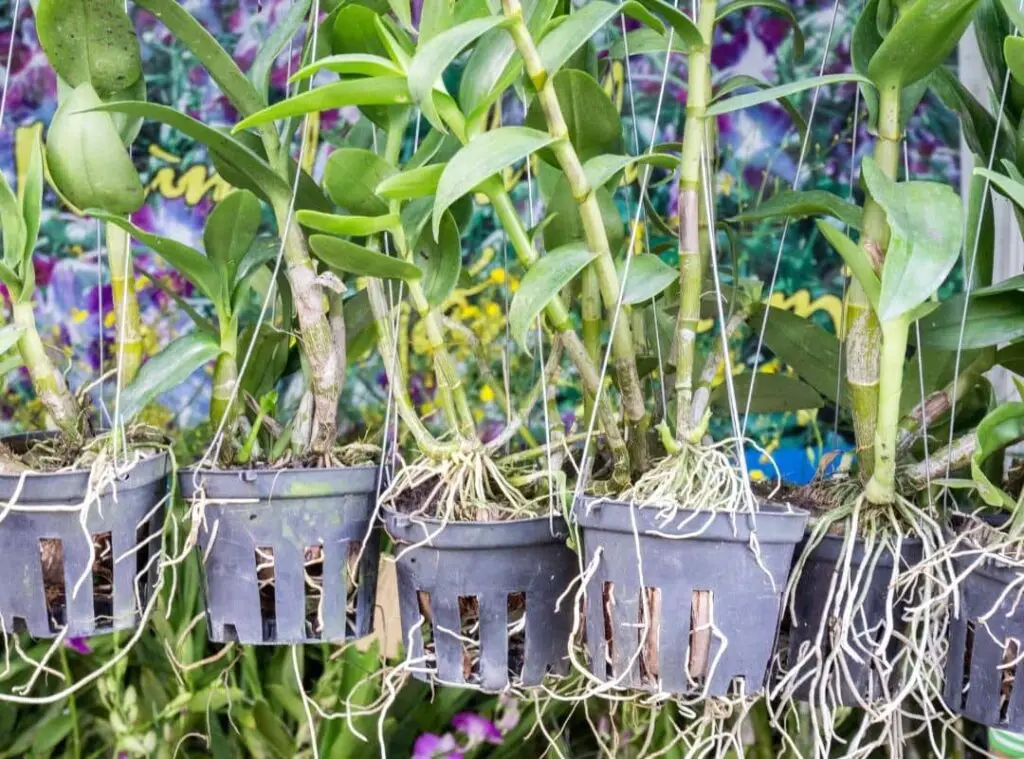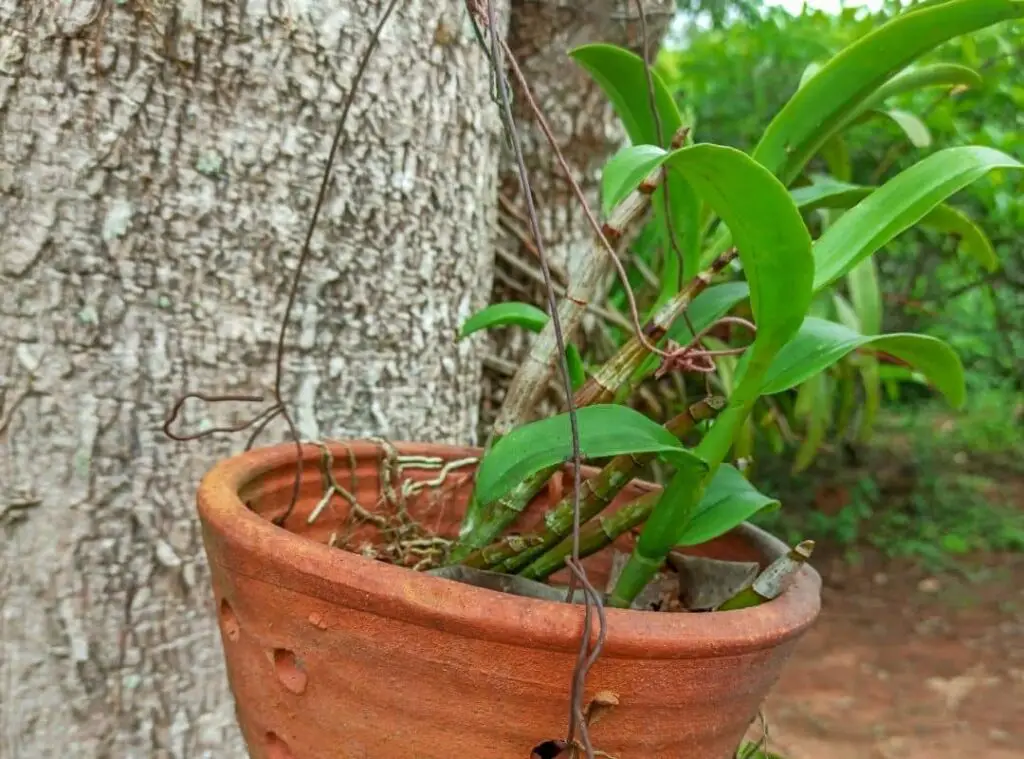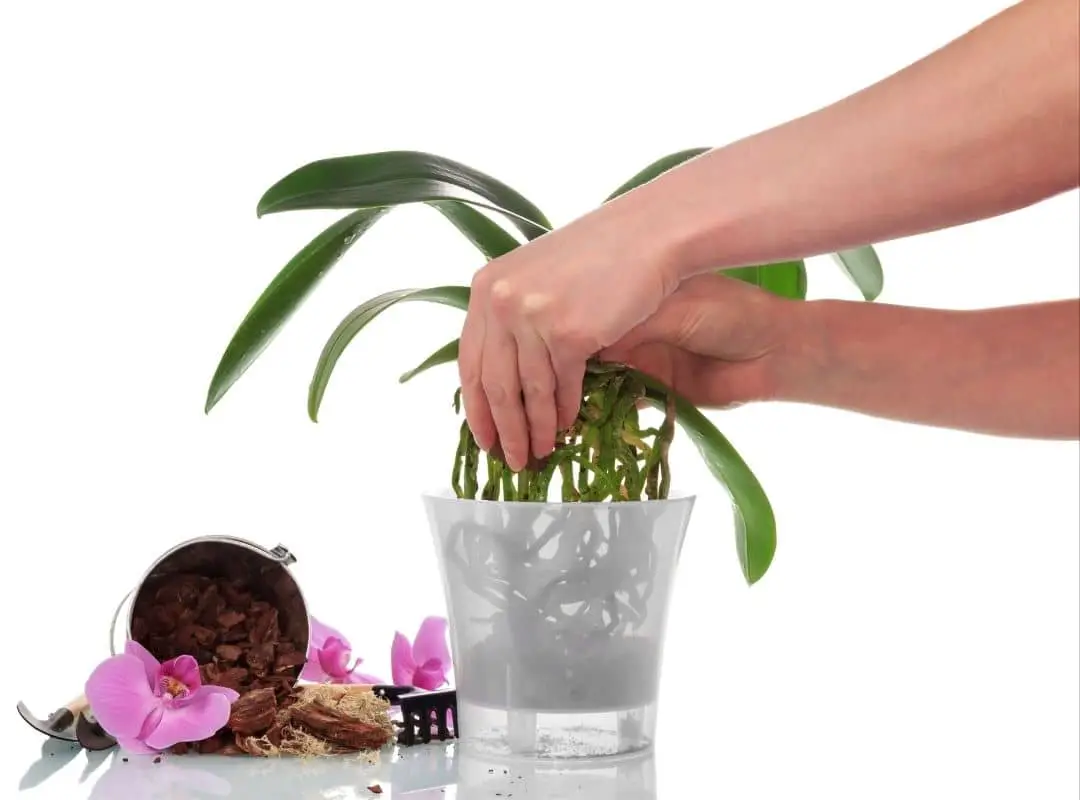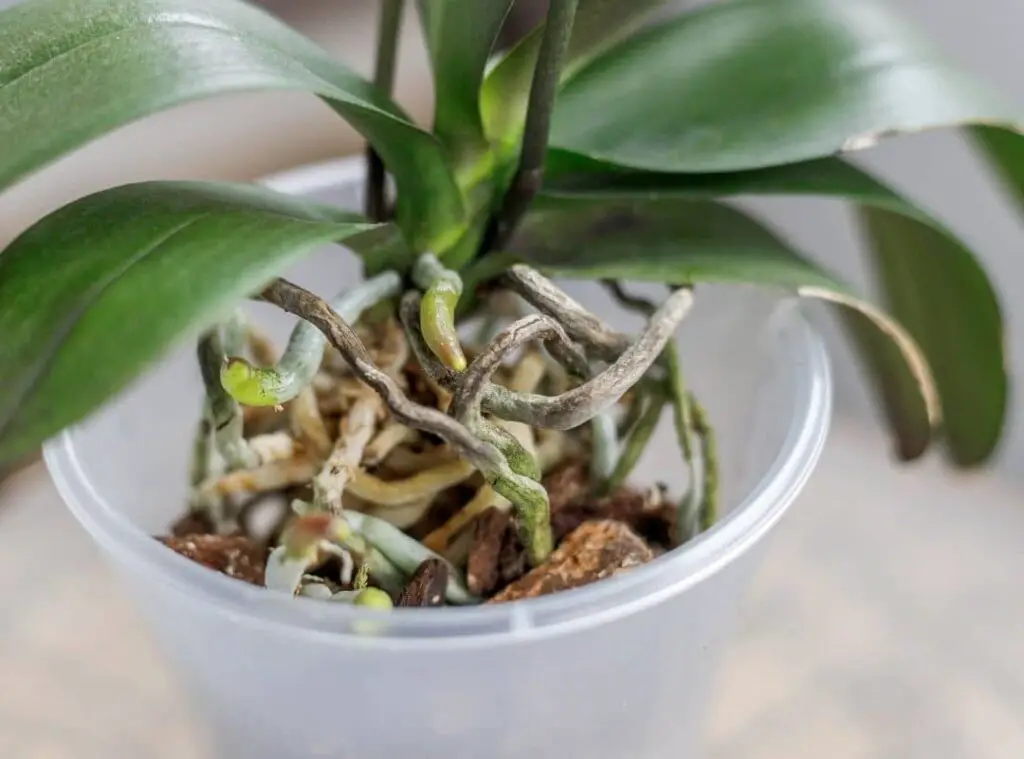Yes, Orchids outgrow their pots. For example, we could take orchids such as phalaenopsis or moth orchids. When they grow in their natural habitat, they tend to grow above the soil surface.
Once orchids outgrow from the pots and form aerial roots, they can absorb nutrients as well as moisture too. They could absorb nutrients from humidity, tropical air, and rainfall too.
You could call this growth pattern epiphytic. Phalaenopsis leaves could emerge from the center, which would lead to form roots from the leaf axes.

How to identify outgrown orchids and when to repot them
You would need to repot the orchids once every year as the roots could outgrow the pots once every year.
Generally, the matured orchid plants could bloom during the latter part of the winter season and during the spring season or in the summer season. Spring and summer are their active growing seasons.
Those blooms could stay alive for a few months. Best is to conduct reporting once they are done with blooming.
Moreover, you could consider reporting them whenever there is any pest attack.
Following are some of the signs which the plant would send out to notify us that we need to report them.
out grown roots
First and foremost, once the roots are outgrown from their pots, we need to realize that we need to repot them. Whenever you spot the orchid’s roots in a compact manner in the pot, you need to proceed with repotting.
Moreover, when you spot the roots start to produce from the plant stem and crawl from the pot, that would be a telltale sign which indicates that the pot is too small.
Not enough nutrients
When the media does not provide enough nutrients, is another sign that you need to consider report orchids outgrowths. Potting media is responsible for providing nutrients for the orchid.
However, as they grow, there would be enough nutrients leached from the potting media and chances are that it could break down to compost at the end.
When you report them once every couple of years or once every year, it would avoid this orchid outgrow of taking place.
However, your potting media would start to deteriorate rapidly. This would be common particularly if your pot does not have sufficient draining. As such once you spot any bad odor, you should consider repotting them without any further delay.
tangled roots
If you spot your orchid roots are tightly tangled, that would be another indication to report them.
It is noticed many Phalaenopsis orchid plant owners misinterpret this thinking that they have become pot bound and need to repot.
However, if your orchid roots could twist easily and could overlap, you could wait a little longer. However, on the other hand, if you spot any tightly tangled roots, you need to go ahead and report them.
Once you repot them, it will make sure that the plant receives adequate nutrients which will consequently allow them to flourish and start blossoming

How to report a outgrown orchids
- Gently take off the orchid from the old pot.
- Take off any moss which is available in the pot
- Trim whatever rotten or dead roots you could spot in the orchid.
- After that you could fill the pots whilst utilizing bark mix. When you fill it, ensure that you fill the pot half full of it.
- As the next step, you could place the root ball which you had trimmed onto the bark. However, when you set it, ensure that you allow the roots to spread out thoroughly.
- You could then place a plant stake or even a chopstick into the bark mix and simultaneously to the plant as that will make sure the orchid is well established there.
- Keep on adding more bark mix over the roots. Ideally you need to add bark mix about ½ inch above the top edge of the pot.
- Use tepid water and fill a large cooking pot or even a bowl.
- Soak the whole pot which has the bark and the plant with water. It should ideally be done for about 20 minutes.
- After that you could lift the terracotta pot which has the plant from water and allow it to drain somewhere.
- You could add more bark, if it settles.

What to do after repotting
You need to provide adequate light for them once you report them. If we consider the orchids which grow in their natural habitat, they will get shade from the tree canopies.
As such, if we take moth orchids for example, you need to locate them in bright and indirect sunlight. Ideally you could place them near a window.
If the sunlight is too bright, you could try using a curtain to defuse the sunlight. Avoid placing the plant under scorching sun under direct bright sunlight, unless the plant would suffer from lead burns.
You need to further be mindful in proving the proper humidity level and temperature level. More importantly you need to ensure that you water them as appropriate too. Usually, orchids would survive in high levels of humidity.
In terms of proper temperatures, it has to be ideally a temperature hovering around 75 degrees Fahrenheit during daytime.
During nighttime they could survive in slightly lower temperatures. When it comes to the autumn season, if we expose the orchids for temperatures below 55 degrees Fahrenheit, it will stimulate the flower buds to form.
Ensure that you do not let the orchid dry entirely. Best is to keep the bark potting medium moist. To do that you could soak the plant and drain it once every week.
Alternatively, you could start watering the bark from top. Avoid spilling water on the leaves.
In terms of feeding the orchids properly, you could ideally do it in spring and in summer. To do that you may use a nitrogen houseplant fertilizer if you have planted them in a bark medium. When it comes to the winter season, you could change the fertilizer to a high phosphorus fertilizer.

Should I report my orchid after buying?
Regardless of orchid outgrowth, you need to report the orchids after buying them. Once you buy it, you can check the root condition.
In addition to that you could eradicate if there are any pests attacks present. Though, you get the orchids from a nursery and though they come in fresh condition, chances are that they could have unhealthy root systems.
Once you unpot the orchid and observe the root system, you can identify whether there are any root roots as well. if you do not attend to root rot soon, chances are that it could get worse. On the other hand, it is always best to give the plant a fresh start.
Read Next: How To Fertilize Snake plants? 12 Unique Tips For You


